This post may contain affiliate links. Read our disclosure policy.
If you’ve been following me for a while, you’ve probably seen me talk about the correct way to measure flour at one time or another.
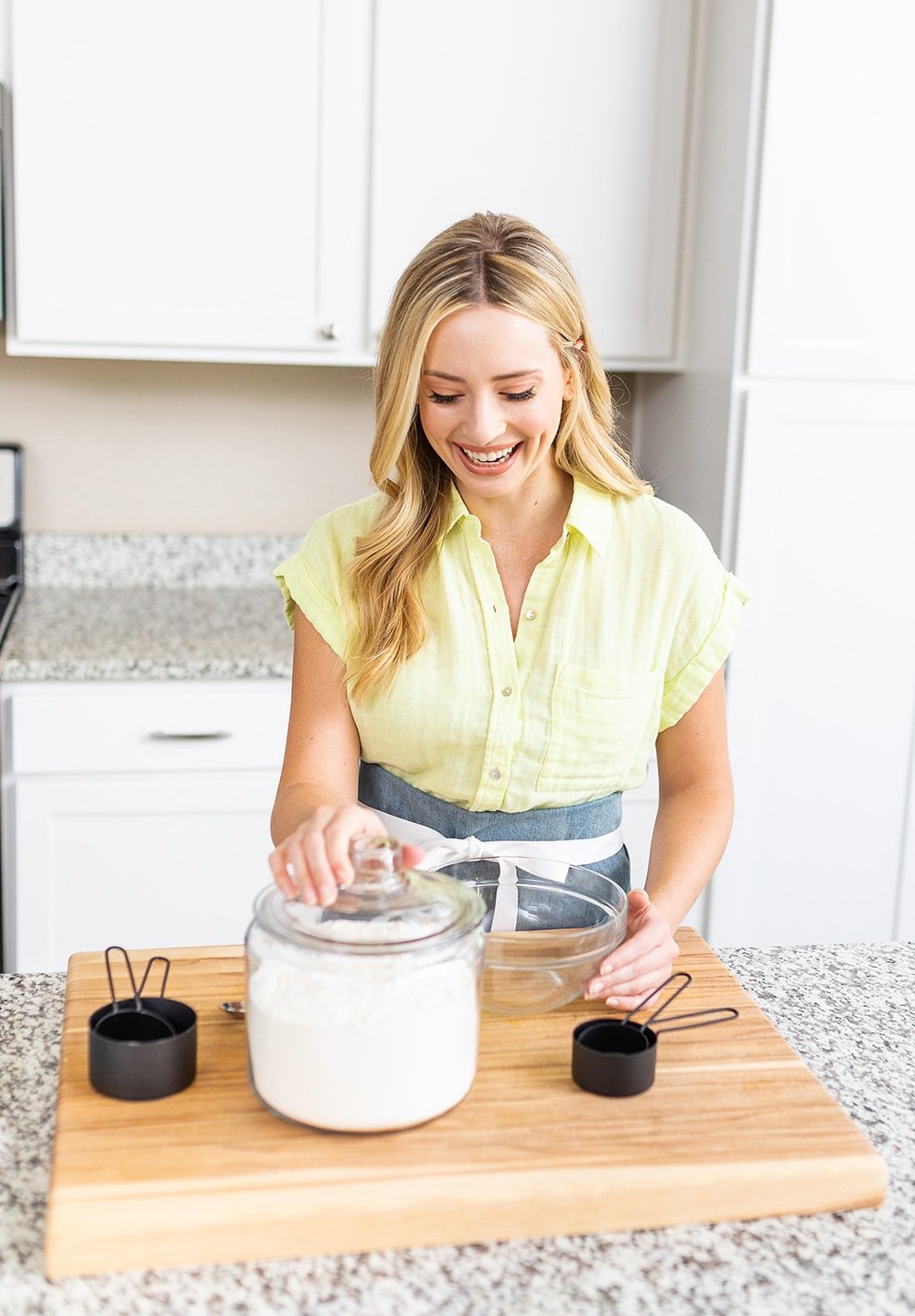
How you measure your baking ingredients can make or break your success in the kitchen.
It’s actually kind of crazy just how critical this one step can be! I see so many frustrated comments and messages from readers asking what could have gone wrong when a recipe doesn’t turn out. Most of the time, it’s due to measuring issues.
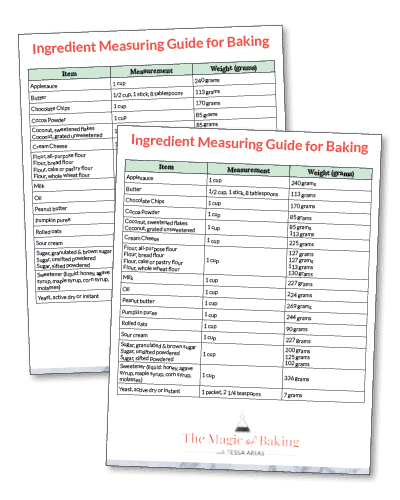
Free Ingredient Measuring Guide!
The key to consistent baking success is a click away. Sign up to get instant access to my printable Ingredient Measuring Guide now!
The easiest ingredient to mismeasure is flour. That’s because it can be so easily compacted into a container or measuring cup without realizing.
Other ingredients can be mismeasured, too, but flour is the most commonly mismeasured – and the results can be disastrous. Accidentally adding more flour than the recipe calls for can yield baking results that are:
- Dry (instead of moist)
- Dense (instead of light and fluffy)
- Crumbly (instead of moist, chewy, or fudgy)
- Tough (instead of tender)
- Rubbery (instead of delicate)
Basically, results that no one wants!
Luckily with a few simple tricks, it’s easy to improve your baking by learning how to measure your flour correctly. I’ve laid it all out in the video and instructions below. If you follow these guidelines every time you bake a recipe, you’ll see much more consistent results.


Sprinkle of Science
How to Measure Flour Correctly
Why is it Important to Measure Flour Correctly?
The cookies below were made using the exact same recipe – but the cookie on the left was made by measuring flour with a scale, and the cookie on the right was made with compacted cups of flour. The cup-measured cookies ended up being dry and tough, and hardly spread while baking:
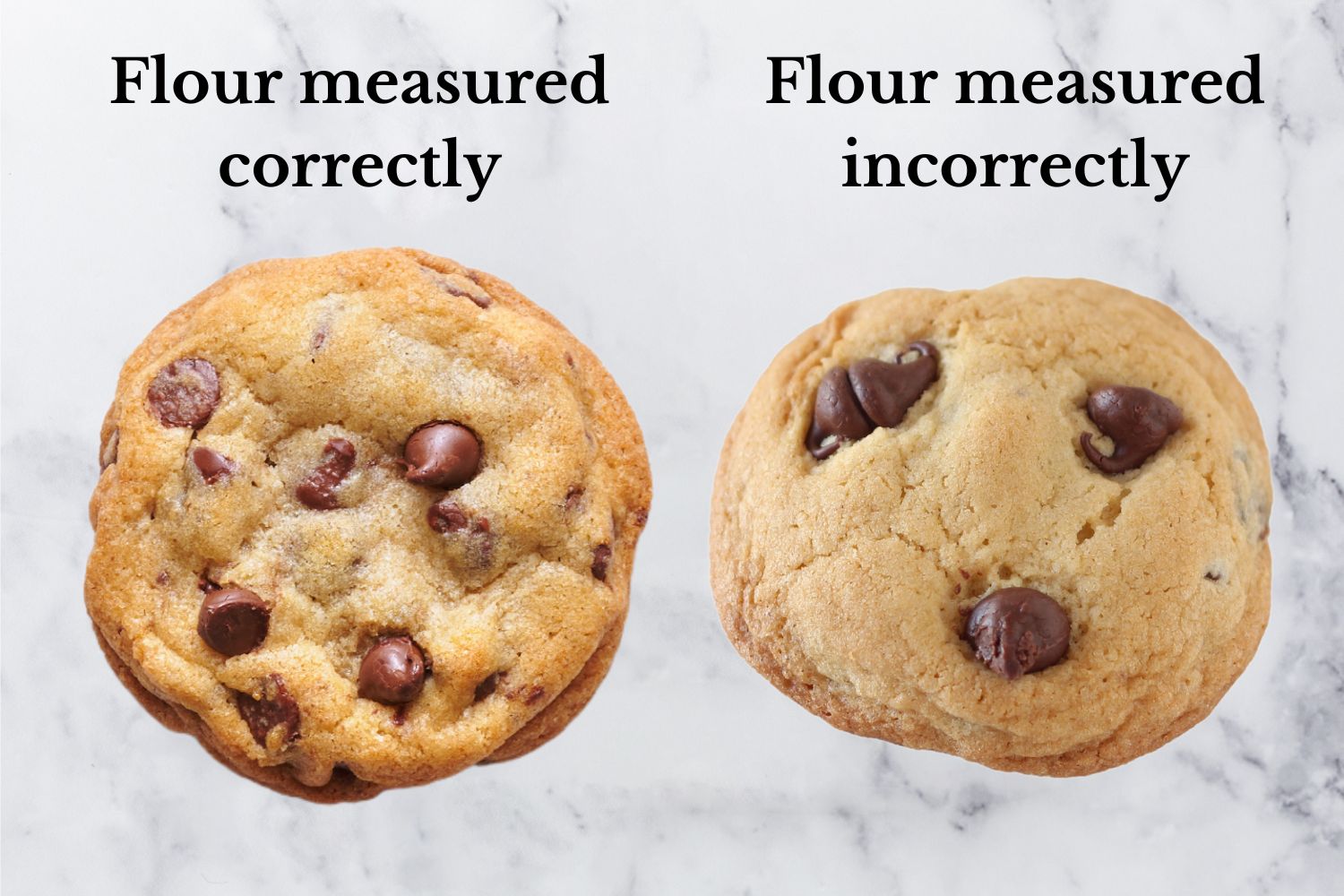
Fluff Your Flour
The first step to measuring flour is to fluff up your flour in its container or bag. Simply take a spoon or fork and fluff the flour around to loosen it up.
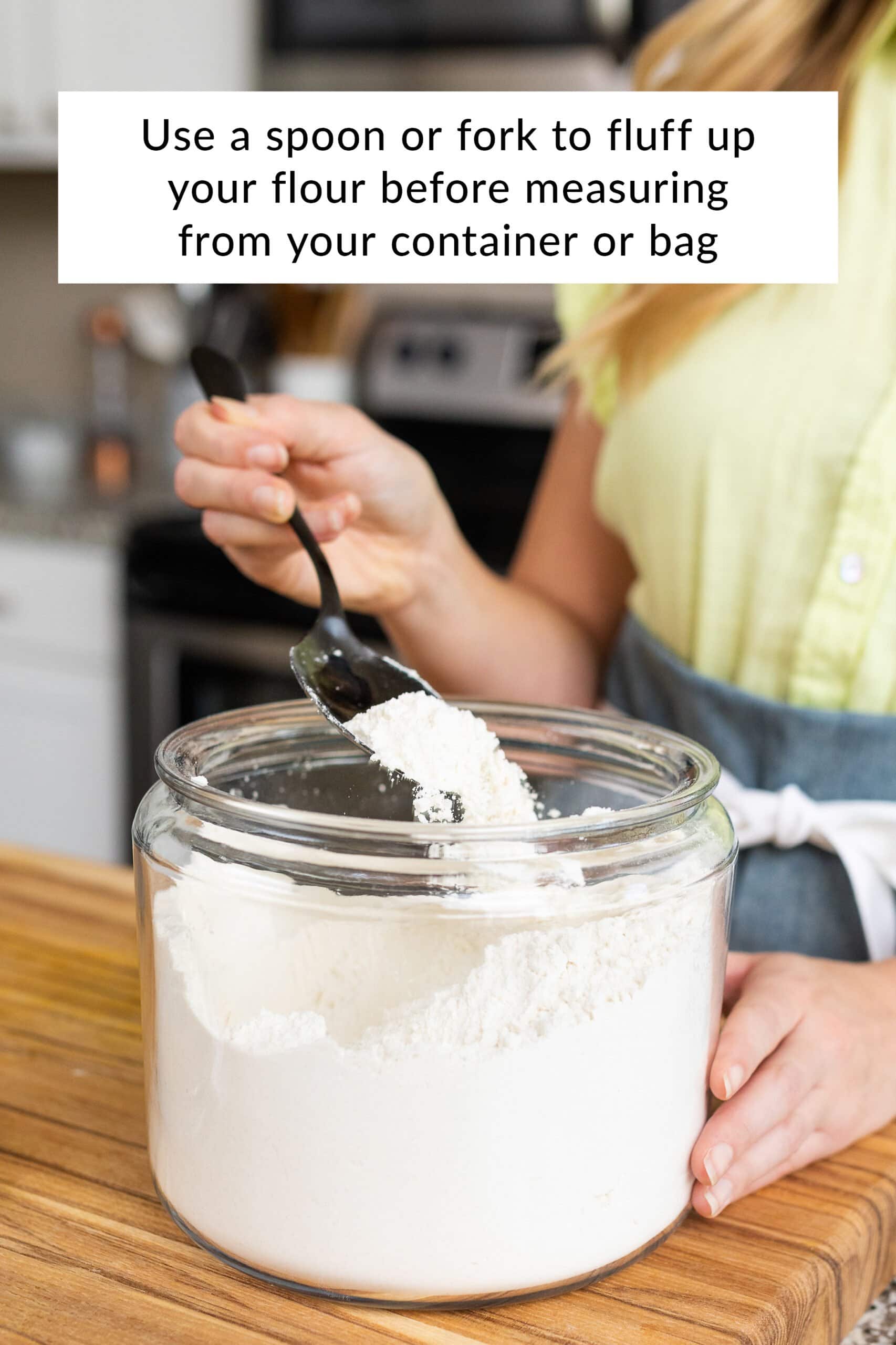
Measuring with a Scale
Measuring with a digital kitchen scale is the best and simplest way to improve your baking. Measuring with a scale gives you 100% accuracy. It also dirties fewer dishes because you aren’t using a bunch of measuring cups.
This is my favorite scale by OXO. This one is a cheaper alternative I also like.
How to Measure Flour with a Scale
- Use a spoon or fork to fluff up your flour before measuring. Flour easily settles and compacts into its container, which can make it easy to add too much to your recipe.
- Place a large bowl on top of a digital scale. Press the zero / tare button on the scale to return the weight to zero before weighing your flour.
- Spoon flour into the bowl until you reach the required amount.
- Press the zero / tare button to return the weight to zero before adding each new ingredient.
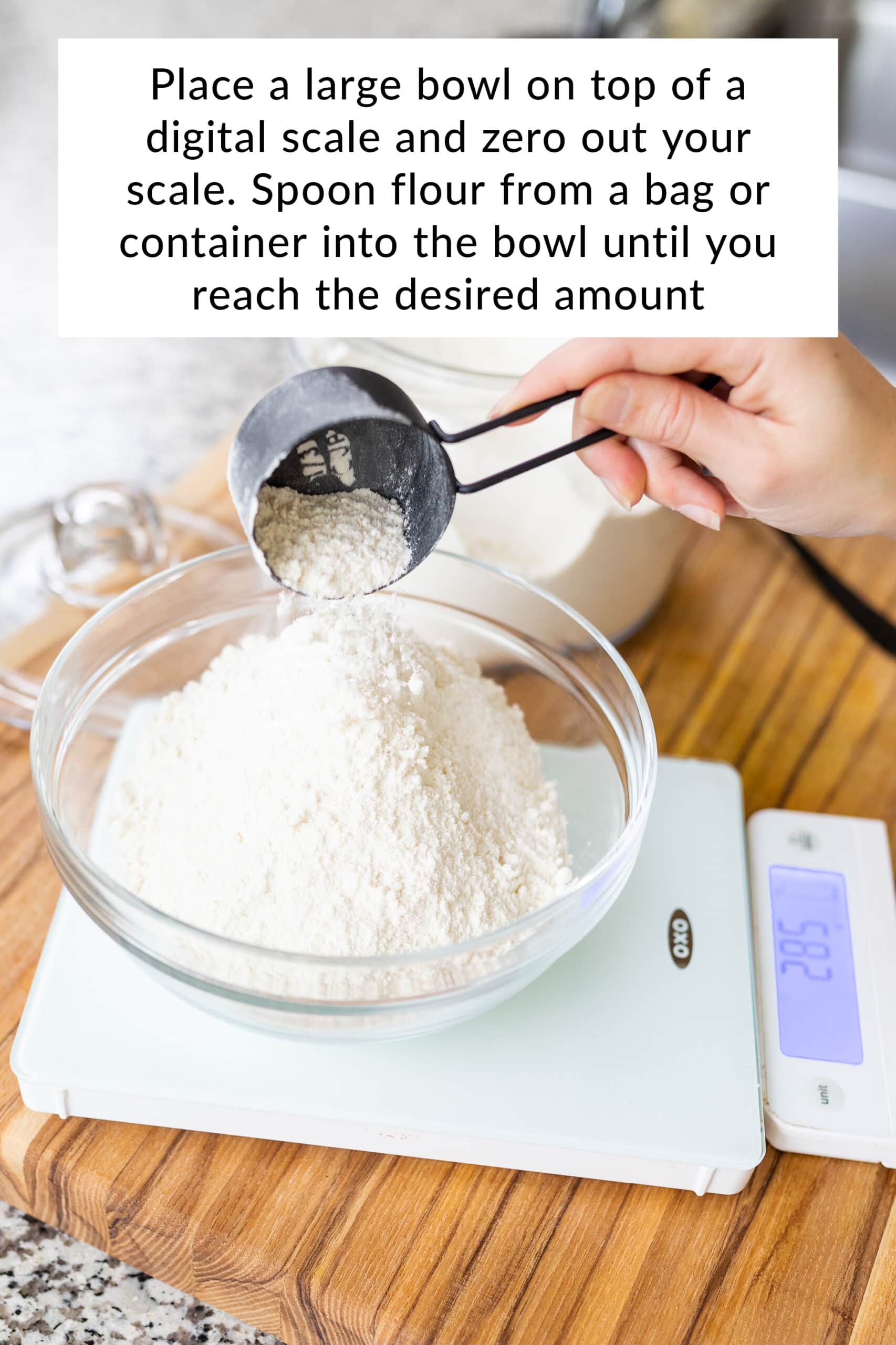
Note: Different Ingredients Weigh Different Amounts
- 1 cup of every ingredient will NOT weigh 8 ounces, as different ingredients have different densities.
- If that’s confusing, think of it like this: 1 cup of rocks would not weigh the same as 1 cup of feathers.
- The majority of my baking recipes here on Handle the Heat include weight measurements in grams. I find grams to be the easiest unit to work with.
- You can also download my handy printable Ingredient Measuring Guide, so you can measure in grams even if a recipe lists only in volume!
If You Don’t Have a Scale, Use The Spoon & Level Method
If you don’t have a kitchen scale, the ‘spoon and level’ method is the second best way to measure flour. Though not as precise as a scale, the spoon and level method helps to ensure you don’t accidentally compact too much flour into your measuring cup.
How to Measure Flour with the Spoon & Level Method
- Use a spoon or fork to fluff up your flour before measuring.
- Spoon the flour into your measuring cup until you have a tall mound. Do not place a measuring cup directly into your flour bag or container (more on this below).
- Use the flat edge of a knife to scrape the excess flour back into the container.
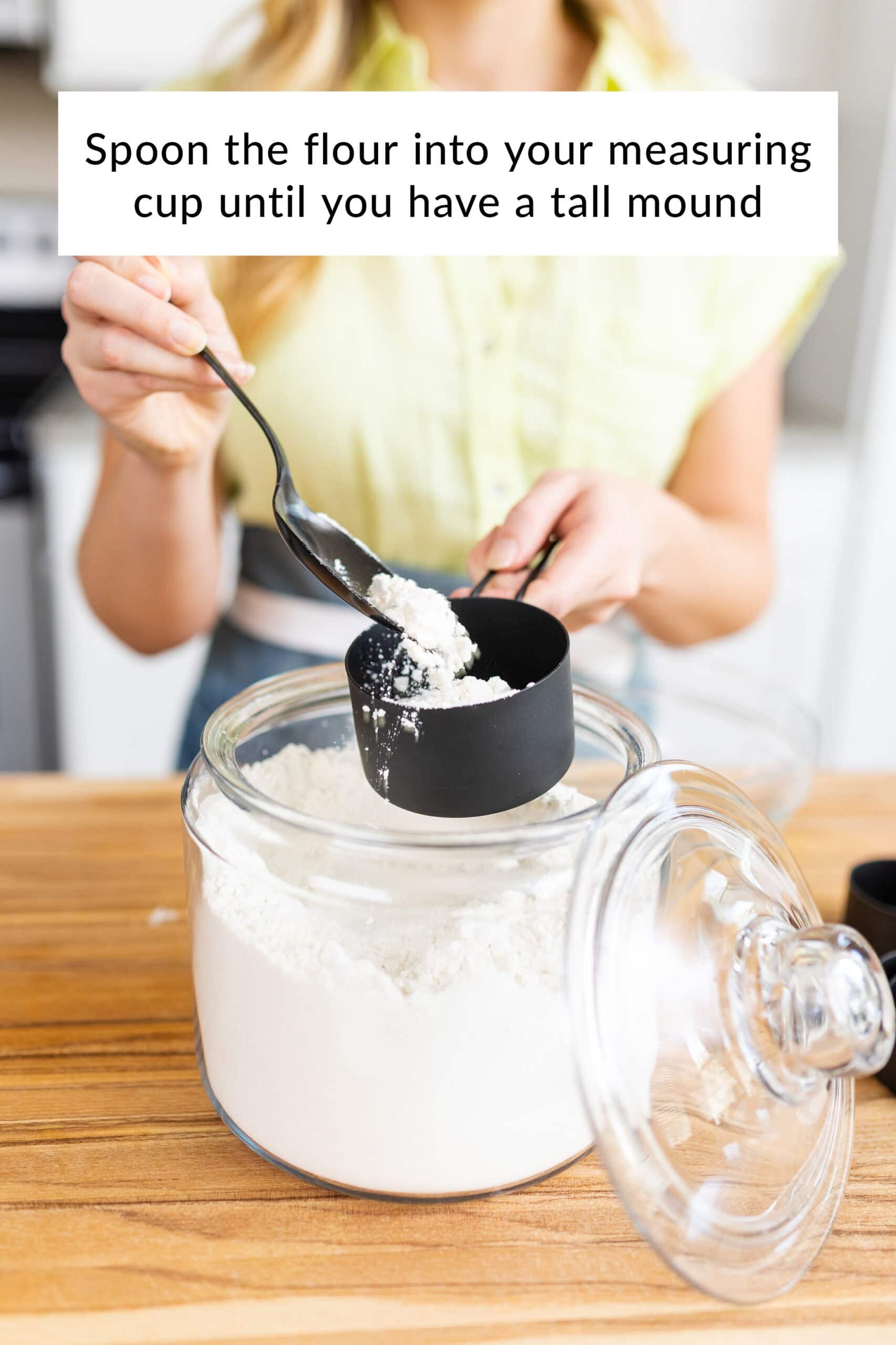
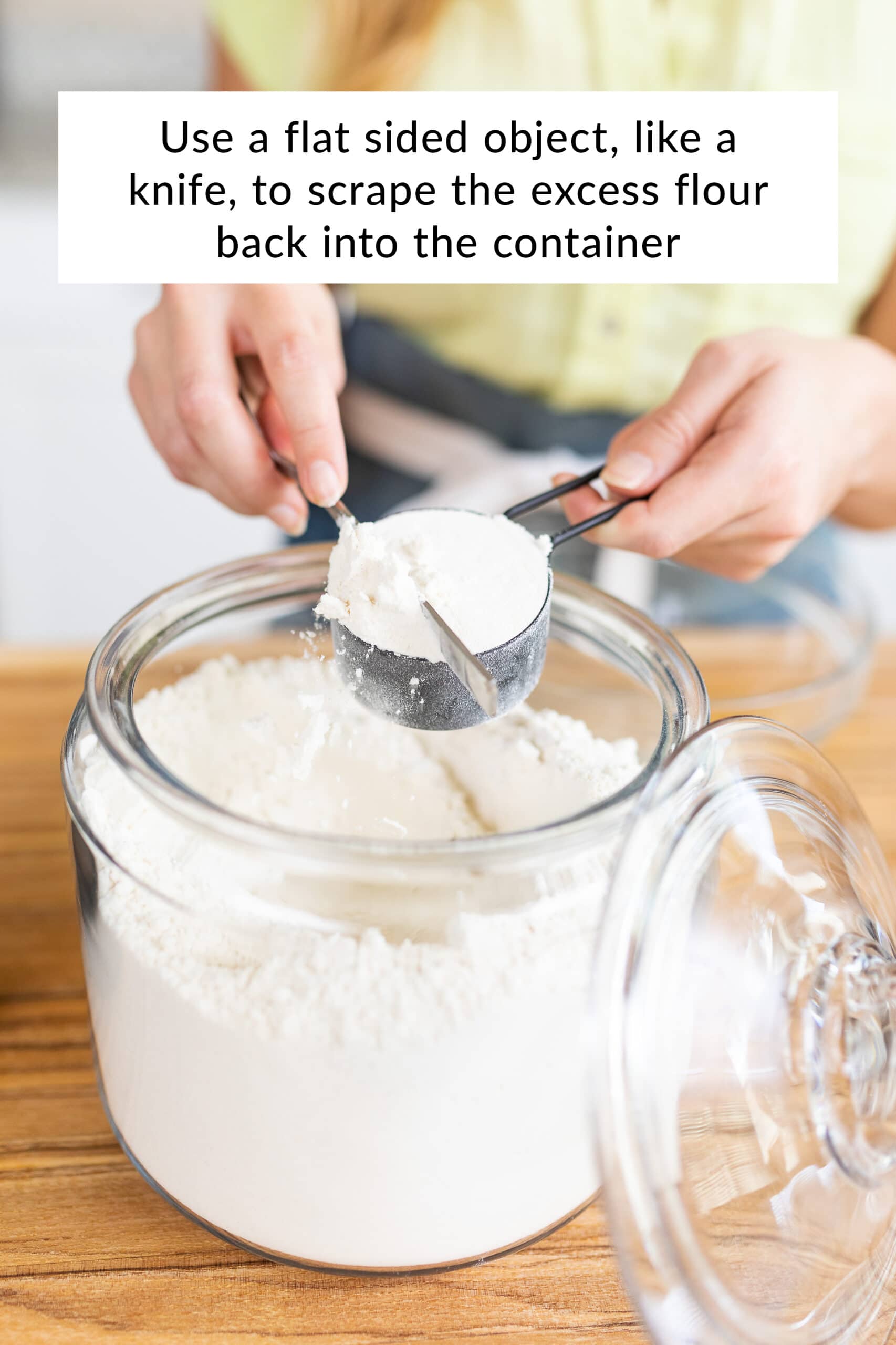
Never Scoop Directly From Your Flour Container!
Never place a measuring cup directly into your flour bag or container, as this will pack too much flour into your measuring cup.
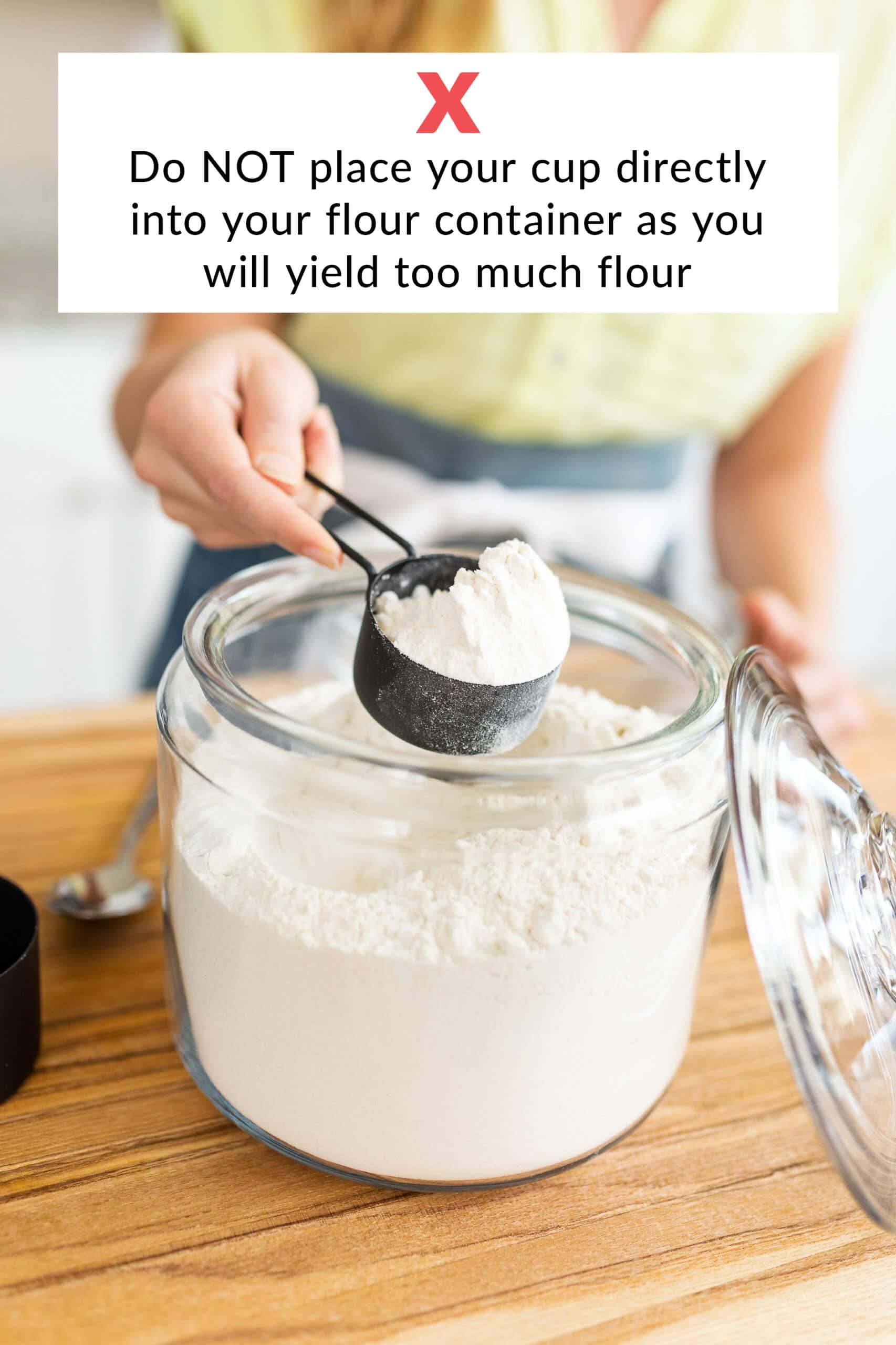
Do you Measure Flour Before or After Sifting?
Whether to measure flour before or after sifting depends on how the ingredient is called for in the recipe. For example, if the recipe calls for “1 cup flour, sifted,” measure the flour first and then sift. If a recipe calls for “1 cup sifted flour,” sift the flour first, then measure.
Recipes You’ll Love:
Now that you’ve learned one of the most crucial steps in baking, make sure to check out some of my top recipes!
Photos by Lauren Peachie.
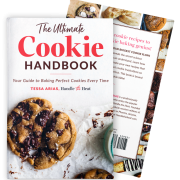
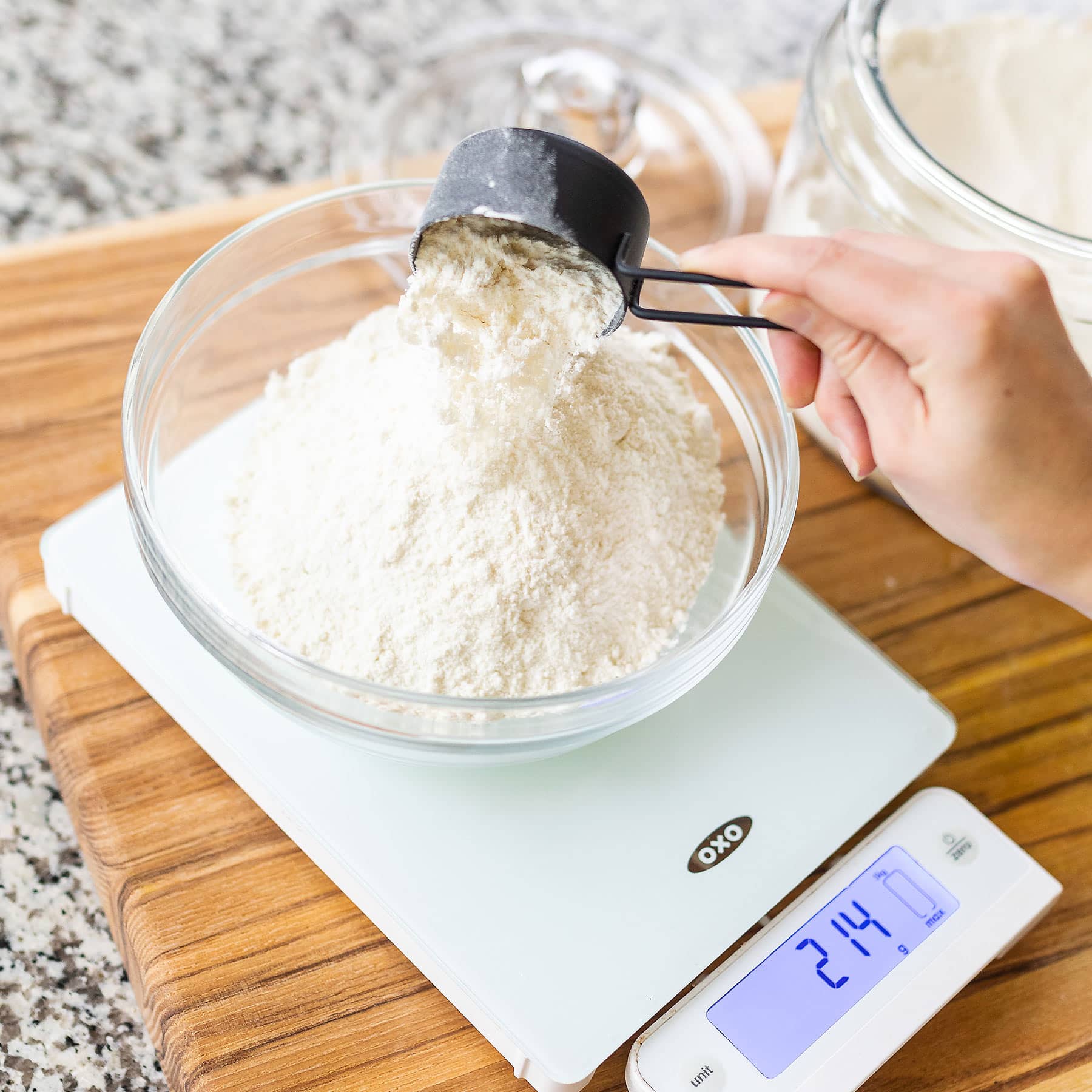
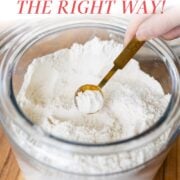
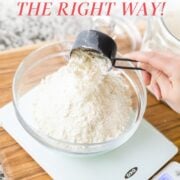
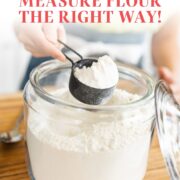
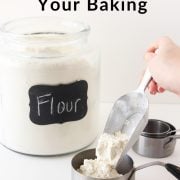
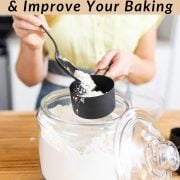


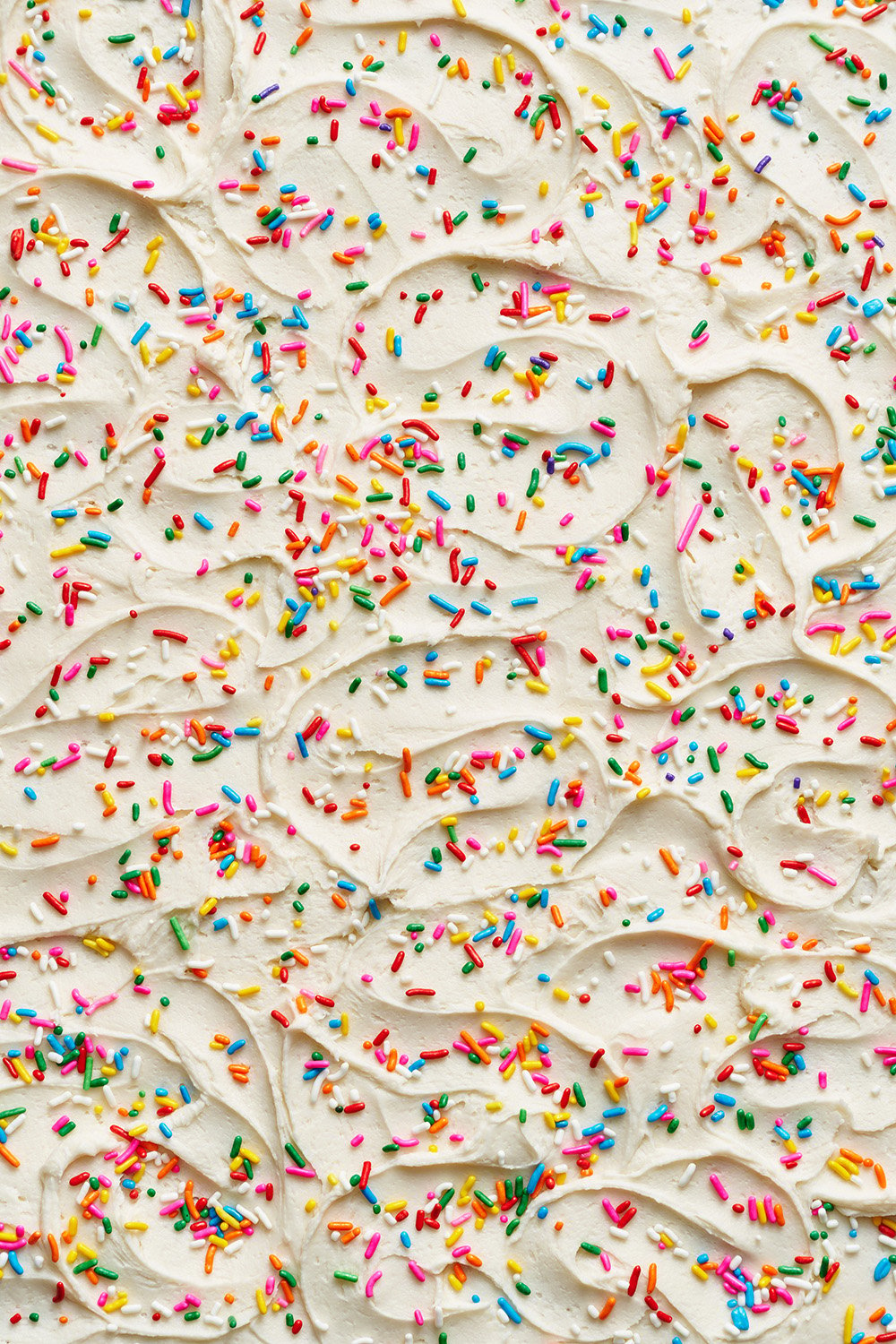
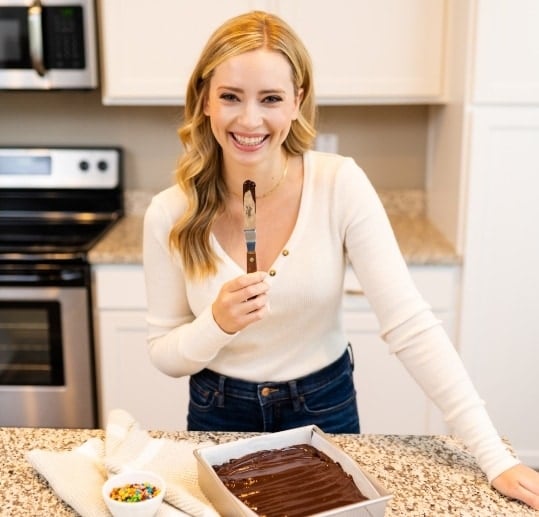
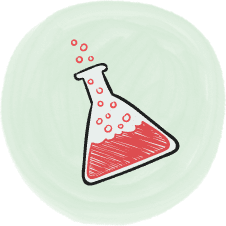
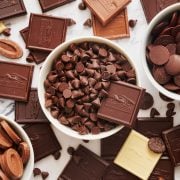
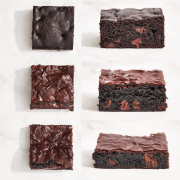
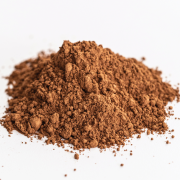
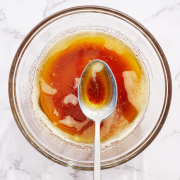
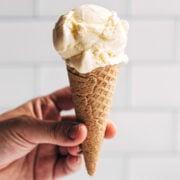
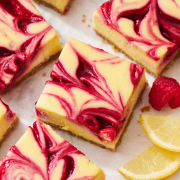
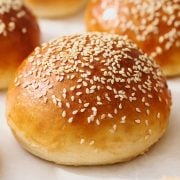
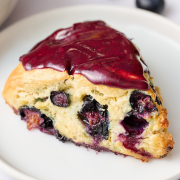








What a great video! I have a digital scale, but never use it but after watching your video today, I’m definitely getting it out! Thank you for such great information. I just received your book in the mail yesterday and can’t wait to read it and start cooking from it!
Thanks so much, Karen! We’re so glad it inspired you to “dust off” your scale 😉 It really does make such a difference in baking. And yay for your book arriving! I hope you enjoy every page and have so much fun baking your way through it. Let us know what you make first!
The free how to use the cups and weight chart is no longer free. Do you have anything else that tells us how to measure by weight?
Hi Jane! Any guide, including our Ingredient Measuring Guide, that you come across on our site is free. Simply click the “Download for FREE” button to have it sent directly to your email. If you’ve tried signing up but aren’t receiving the email, please first check your spam, then email [email protected] for more assistance if needed. I hope that helps!
Thank you for your time in explaining how to use a scale. I already do ‘fluff’ up my flour, but I wanted to learn how to use my scale.
Hello
Do you have any recipes using honey or maple syrup as the sweetener ingredient instead of sugar.
Thank you.
Brenda
Any thoughts on using WW flour or White Wheat flour in place of AP flour?
We don’t recommend substituting flours unless the recipe has been tested by the author with the substitution. This will ensure the correct outcome. If you’re looking to substitute flour, I’d recommend looking for a recipe that specifically calls for that flour or enjoying a day in the kitchen experimenting 🙂
If you look at the nutrition label on the bag of flour you’re using you will find grams per cup. In every bag of all purpose flour I’ve researched 1 cup=120g
I have noticed that the protein value is different on different manufacturers of flour. am I correct in believing that the lower the protein in plain flour makes the best pastry?
Hi Cynthia! Great question! It definitely depends on what you’re making and the desired result:
– Bread flour contains a higher percentage of protein. This is needed in bread and yeast-raised baked goods because we’re trying to build gluten strands to create structure, helping it rise. In cookies, bread flour yields thicker and chewier cookies compared to all-purpose flour. This is why Tessa recommends half bread flour and half all-purpose flour in her Ultimate Chocolate Chip Cookie recipe.
– All-purpose flour falls right in the middle of the protein content chart, and as you noted, it depends on the brand as to the exact percentage of protein. King Arthur Baking’s AP flour generally has the highest level of protein of commonly-available all-purpose flours. This is great when you’re looking for structure and chew in cookies – but this can be problematic in delicate bakes like cakes and cupcakes, where we don’t really want a ton of chew or build-up of gluten. Tessa’s go-to all-purpose flour is Gold Medal Bleached, and this brand is generally what our team uses to test HTH’s recipes.
– Cake flour comes in at the lowest level of protein content. Cake flour has a very fine texture. Using cake flour in cookies results in a much softer, lighter, often cakier cookie, but using it in cakes can yield a beautifully soft, light sponge (like in Tessa’s Funfetti Sheet Cake here). Learn more about cake flour and how it compares to other flours in cakes, as well as DIY substitutions, here.
I hope that helps, Cynthia! Let us know if you have any questions 🙂
I love this! Thank you for the chart! I am from Germany and all of my recipes use grams.
Hey!
I have a kitchen scale, but I have a question: wouldn’t the weight of the bowl on the scale add to a lot of the weight?
Thanks!
Hi Zara! Your kitchen scale should have a ‘tare’ button. Just place your bowl on the scale, hit the ‘tare’ button, and that will zero out the scale. Then you can weigh your ingredients. Press the ‘tare’ to zero it out every time you weigh out a new ingredient, or every time you place a new bowl on the scale, to ensure accuracy. I hope that helps! Happy baking 🙂
What brand of flour, sugar, butter and vanilla do you use?
Hi Lori! Tessa uses any standard brand for sugar and Challenge unsalted butter. She has a few favorite brands of vanilla but McCormick is a great option. For the flour, it really depends on the type of flour. We’d love to invite you to join our Membership Waitlist, we share a full breakdown of Tessa’s favorite ingredients and baking equipment exclusively with HTH Members!
Tessa, I absolutely love everyone of your Cookie Recipes that I have tried. And all of the great tips you have given us make so much sense. You really are a Baking Genius. Thank you so much for sharing with the Cookier community.
Sweet Regards,
Linda Butler
As a new baker, just want to say another great tip! Thank you!